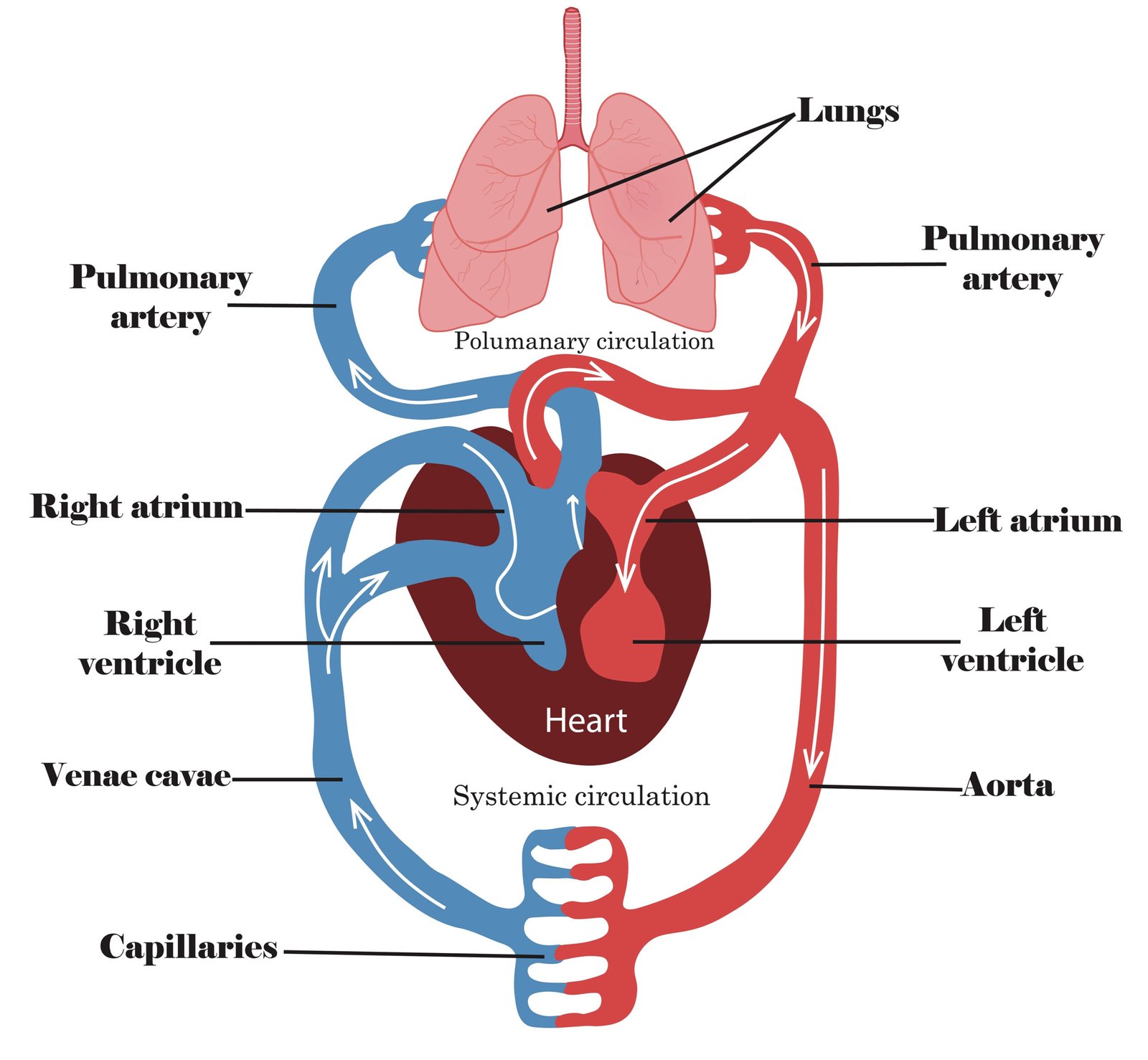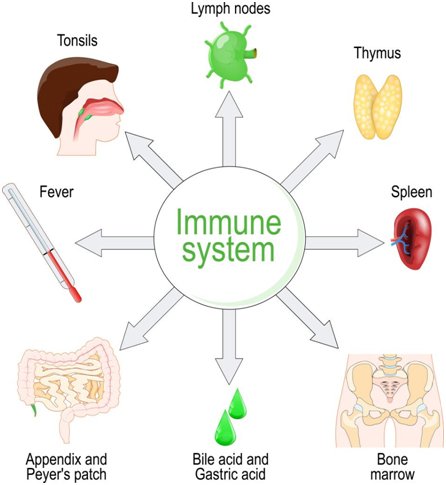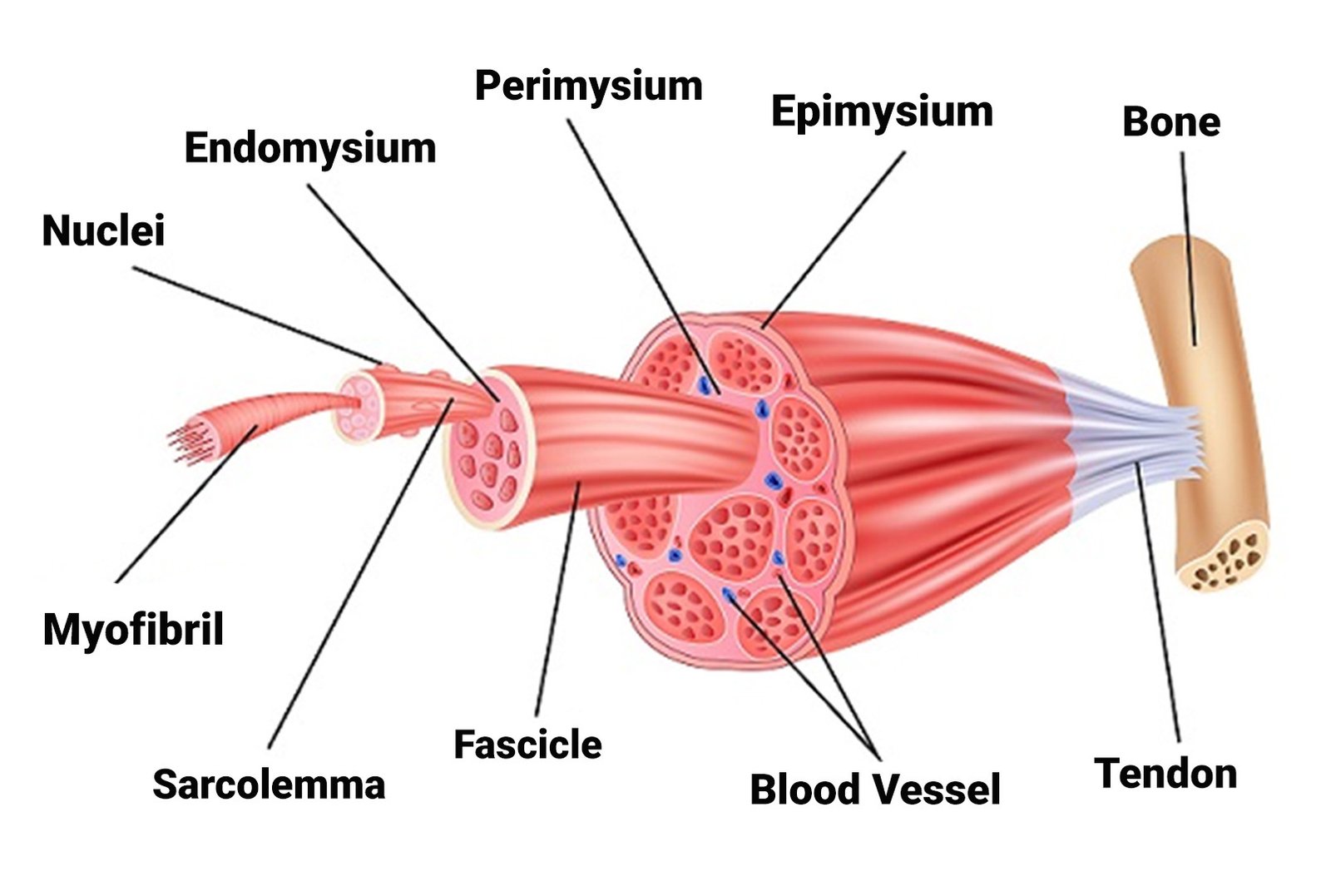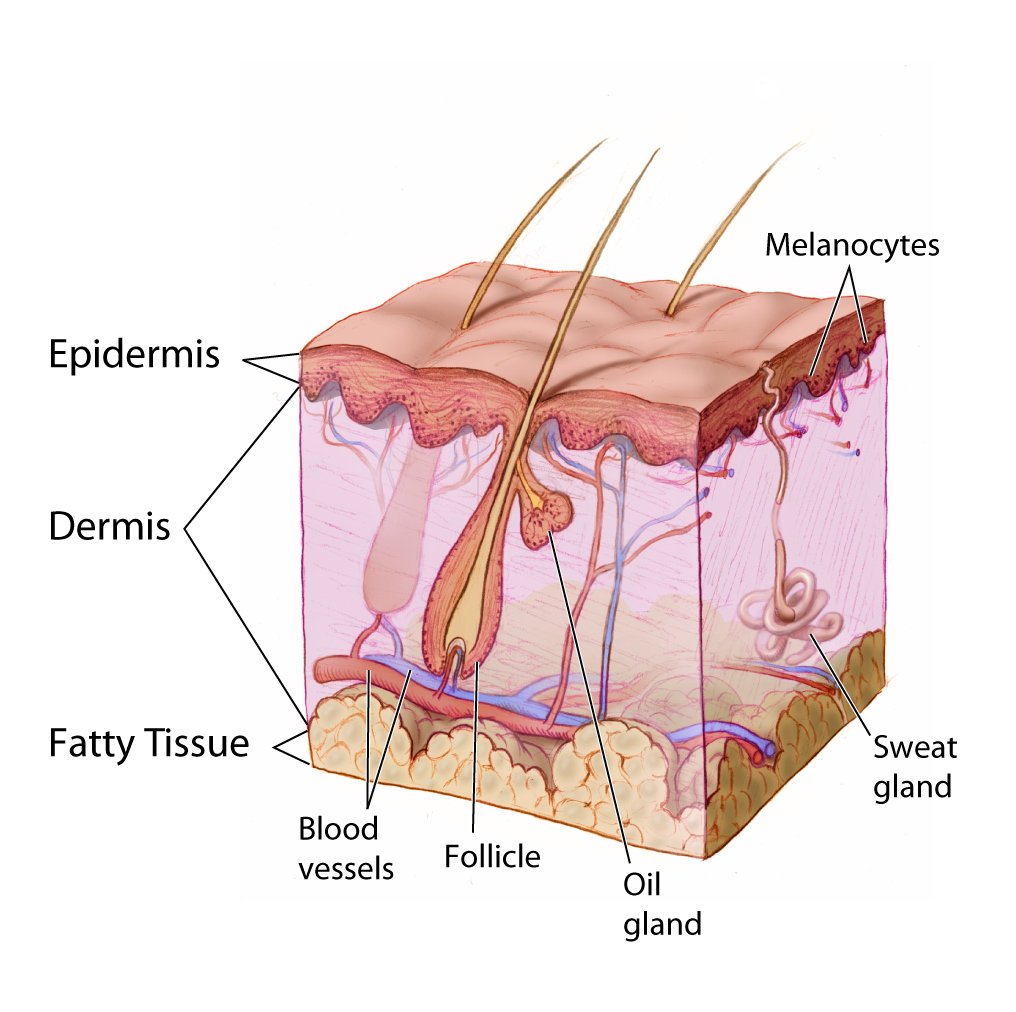
Understanding the therapeutic effects of essential oils is the first step in comprehending the healing power of scent therapy.
Essential oils are chemical compounds that plants use to defend themselves against predators. Indeed, from a biochemical point of view, they are part of the plant’s immune system. These defensive substances result from the secondary process (biosynthesis) and are unnecessary for primary cell functions.
Integrating Aromatherapy into one’s daily routine can yield numerous benefits to the interdependent systems of the human body.
The human body is a complex and awe-inspiring machine comprising various interdependent systems that work harmoniously to promote overall health. Let’s look at the body’s different systems and how Aromatherapy may benefit each particular system.
THERAPEUTIC EFFECTS: Cardiovascular System
It’s always good to explore different avenues regarding health and well-being. Cardiovascular afflictions could benefit from combining an aromatherapy approach with other alternative practices of well-being and treatment like Tai Chi, breathing exercises, and healthy nutrition.

The principal function of the circulatory system is the supply of nutrients, water, oxygen and secretions to all body cells. It is a closed-loop system that involves the heart, arteries, veins, capillaries, and blood.
- Hypertensives: May help to increse blood pressure.
Black Pepper, Rosemary, Thyme - Hypotensives: Help in reducing blood pressure.
Lavender, Ylang-Ylang, Marjoram - Nervines: Strengthen the nervous system and help reduce stress and anxiety.
Roman Chamomile, Lavender, Neroli - Tonics and astringents: Fortify the whole cardiovascular system.
Cypress, Geranium, Lemon
THERAPEUTIC EFFECTS: Digestive System
Some digestive diseases and conditions are acute, lasting only briefly, while others are chronic or long-lasting. For example, several afflictions can result from constipation, including hemorrhoids, flatulence, insomnia, headaches, varicose veins, obesity, and indigestion. The cause could be simple, such as stress or inadequate dietary fibre.
The human digestive system is crucial in breaking down food into nutrients. Of course, all these nutrients provide energy for the body’s primary functioning and are vital for growth and cell repair.

One of the most effective aromatherapy treatments for digestive discomfort is rubbing the abdomen in a circular motion.
Always massage clockwise, in the same direction as the large intestine
- Antispasmodics: Help with abdominal pains and spasms.
Roman Chamomile, Fennel, Melissa, Orange, Peppermint - Appetizers: Help stimulate appetite.
Bergamot, Ginger, Orange - Carminatives and stomachic: May help with flatulence and nausea.
Roman Chamomile, Fennel, Peppermint, Sweet Basil, Tangerine - Cholagogues: May stimulate the gall bladder and, hence, the bile flow.
Lavender, Peppermint - Hepatic: Help to stimulate the secretive functions of the liver.
Lemon, Lime, Peppermint, Rosemary
THERAPEUTIC EFFECTS: Immune System
All immune responses revolve around three basic principles – recognition, mobilization, and attack. Following the beliefs of ancient healers, mystics, and philosophers, the disease is nothing more than a disturbance of the body/mind balance. Thus, it is vital to maintain stability in the interrelationship of the nervous, endocrine, and immune systems.

The function of the Immune System is to defend the body against invaders. Indeed, it has evolved an intricate network of checks and balances classified as innate and learned immunity.
According to the American psycho-neuro-immunologist Dr. Michael A. Weiner, our attitudes, beliefs, and emotions can influence the immune system, even conditioned through “psychological devices,” such as exercise relaxation and deep breathing.
Wildwood C., 1996
- Antibiotics and bactericidal: To help fight bacterial infections.
Basil, Lavender, Rosemary, Tea Tree - Antivirals: To help reduce complications of viral infections such as cough, flu, and colds.
Eucalyptus, Tea Tree, Sweet Marjoram - Cytophylactics: May help to increase the activity of the white cells in the blood.
Frankincense, Lavender, Rosemary - Depuratives: Help fight impurities in blood and organs.
Fennel, Juniper Berry, Rose - Febrifuge Agents: Used to help reduce fever.
Roman Chamomile, Peppermint, Basil, Thyme - Fungocidals: help to combat infections caused by fungi.
Lavender, Myrrh, Tea Tree - Sudorifics and diaphoretics: To help raise sweating and eliminate toxins.
Roman Chamomile, Rosemary, Thyme
THERAPEUTIC EFFECTS: Muscular System
It is a scientific fact that essential oils are not capable of curing chronic diseases such as osteoporosis, arthritis or rheumatism. However, they have been found to be effective in alleviating the symptoms associated with these ailments.
The muscular-skeletal system is responsible for locomotion and all motor functions. Indeed, it comprises more than 600 muscles and occupies between 40% and 60% of the human body’s weight.

Several essential oils possess analgesic properties. The underlying mechanism is attributed to certain oils’ anti-inflammatory, circulatory, and detoxifying effects, while others produce anesthetic effects. This information could be helpful for individuals seeking alternative treatments for pain management.
Shirley Price, 1993
- Anti-inflammatory: To help reduce pain and inflammation in arthritic joints.
Roman Chamomile, Frankincense, Lavender, Myrrh - Anti-rheumatics: Help to soothe rheum-associated pains.
Eucalyptus, Lavender, Rosemary, Ginger, Juniper Berry, Marjoram - Depuratives: To help detoxify the body from metabolic waste.
Juniper Berry, Lemon, Rose - Rubefacients: Help to stimulate periphery circulation.
Black Pepper, Ginger, Rosemary
THERAPEUTIC EFFECTS: Nervous System
The nervous system acts as the command center of the human body, as it originates in the brain. It sends signals from one cell to another at the most basic level. However, at a more integrative level, the primary function of the nervous system is to control the body. Indeed, it is responsible for coordinating the overall activity.
Meanwhile, the motor nervous system governs voluntary actions involving skeletal muscle, skin, and joints. On the other hand, the autonomic nervous system oversees involuntary actions such as heartbeat.
The sense of smell has, by reflex action, an enormous influence on the function of the central nervous system.
Steve Van Toller and George H. Dodd 1988

How do essential oils interact with the limbic system?
The oldest part of our brain is the limbic system. It conducts nerve impulses to the hypothalamus, a switching point for transmitting olfactory messages to the bloodstream.
The complex brain and body reaction takes place every time you smell something.
Maury, 1964
Depending on the information received, hormones are activated and released. Indeed, it takes just a few seconds from the perception of a fragrance to the discharge of the corresponding gland. Therefore, a simple inhalation of an odour could originate changes in the body’s functions, starting any physiological processes. As a result, we will react emotionally and physically to an aroma through our autonomic nervous system.
The diffusion of essential oils may directly influence the mucous membrane of the nose and lungs, stimulating the olfactory system.
- Suprarenal stimulants: For help with stress and exhaustion.
Basil, Geranium, Rosemary - Sedatives: May soothe and calm the nervous system.
Clary Sage, Lavender, Marjoram, Melissa, Sandalwood, Vetiver - Hypnotics: Induce sleep.
Roman Chamomile, Neroli - Stimulants: To aid in restoring energy levels.
Basil, Peppermint, Rosemary, Ylang-Ylang, Black Pepper - Balancing: To balance or Relax the mind.
Bergamot, Geranium - Nerve tonics: To strengthen and tone the nervous system.
R. Chamomile, Clary Sage, Juniper Berry, Lavender, Lemongrass, Marjoram, Patchouli, Rosemary - Antidepressants: To uplift the spirits.
Bergamot, Geranium, Lemon, Orange, Rose, Rosemary, Ylang-Ylang
THERAPEUTIC EFFECTS: Respiratory System
The respiratory system’s primary function involves the distribution of fresh oxygen to every part of the body via the bloodstream. The process begins with the nose and mouth and continues through the airways to the lungs, where oxygen from the atmosphere is exchanged for carbon dioxide from the body’s tissues.
The olfactory cortex transmits signals to the brain, triggering a complex chain of reactions throughout the body.

Aromatherapy activates the sense of smell that allows us to discover the almost forgotten aroma of plants.
Salvatore Battagia, 1997
Diet and lifestyle are of paramount importance in treating respiratory conditions. However, studies have demonstrated that essential oils effectively treat respiratory problems. Generally, wood and resin oils tend to be more drying and shooting, while the leaf oils are more stimulating and active in fighting bacteria.
Also, it is worth mentioning that inhalations are a valuable holistic tool in treating different respiratory tract diseases.
- Antispasmodics: Help relax the spasms of the bronchi.
Bergamot, Cedarwood, Cypress, Roman Chamomile - Antivirals: Help fight common colds and flu.
Clove, Eucalyptus, Tea Tree - Diaphoretics or febrifuges: Helpful for feverish, colds, and flu.
Black Pepper, Ginger, Thyme - Expectorants: Help the expulsion of mucus.
Eucalyptus, Fennel, Myrrh, Peppermint, Pine, Sandalwood, Thyme - Soothing or balsamic: To help treat common colds, chills, or congestion.
Frankincense, Myrrh
THERAPEUTIC EFFECTS: Integumentary System
It also produces melanin, a natural pigment that acts as a crucial shield against the harmful effects of ultraviolet radiation emitted by the sun.

The skin is the largest organ of the human body, providing a mechanical protective barrier against drying and invasion of pathogenic organisms.
Generally, there is no phototoxic risk if the oils are in a product, such as shampoo, bath preparation or soap. However, essential oils can adhere to the skin in a sauna or steam inhalation.
Robert Tisserand and Rodney Young, 2014
Using essential oils to treat everyday health issues can be a smart way to boost your overall wellness plan. However, it’s essential to be careful when applying them, as some oils can cause skin irritation or sensitivity, particularly if used in high concentrations.
- Anti-inflammatory: May help rashes, eczemas, wounds, and bruises.
Chamomile, Lavender, Geranium - Antiparasitic: To help treat lice and scabies.
Eucalyptus, Rosemary, Tea Tree - Antiseptics: Most essential oils may act as antiseptic to a greater or lesser degree.
Lavender, Eucalyptus, Lemon, Tea Tree - Cicatrizant: May help stimulate cell growth, very practical in burns, wounds, scars, and striations.
German Chamomile, Helichrysum, Lavender, Neroli, Myrrh, Frankincense, Geranium - Deodorants: Help with excessive perspiration.
Cypress, Bergamot, Lemongrass, Juniper Berry - Fungicides: May help with mycotic skin conditions like athlete’s feet, tinea, or candida.
Cedarwood, Lavender, Lemongrass, Marjoram, Myrrh, Patchouli, Tea Tree - Repellents: To help repel insects such as mosquitoes, ants, fleas, and moths.
Lavender, Eucalyptus, Geranium, Citronella
References
Beverley Hawkins, West Coast Institute of Aromatherapy Aromatherapy 201, 2009
British Pharmacopoeia Commission, British Pharmacopoeia, 2013. (Vols. IV and V)
Carson CF, Hammer KA, Riley TV. Melaleuca alternifolia (tea tree) oil: A review of antimicrobial and other medicinal properties. Clinical Microbiology Reviews, 2006
Chrissie Wildwood, The Bloomsbury Encyclopedia of Aromatherapy, Bloomsbury, London, England, 1996
Council of Europe. European pharmacopeia. (Vol. 1). Strasbourg, France: Directorate for the Quality of Medicines & Health Care, 2010
Dr. Jean Valnet, The Practice of Aromatherapy, C.W. Daniel Co. Ltd, Saffron Walden, Essex, 1980
H. Can Baser, G. Buchbauer. Handbook of Essential Oils. Science, Technology, and Application. CRC Press, Taylor & Francis Group: New York, 2010
Julia Lawless, The Illustrated Encyclopedia of Essential Oils, Element Books Ltd & Barns & Noble Books, 1995
Marguerite Maury, The Secret of Life and Youth, Regenerations through Essential Oils, A Modern Alchemy, Macdonald & Co; First UK Edition (1964)
Patricia Davis, Aromatherapy, An A-Z, C.W. Daniel Co. Ltd, Essex, England, 1988 reprinted 1994
René-Maurice Gattefossé, Gattefossé’s Aromatherapy, C.W.Daniel Co. Ltd., Essex, England, 1993
Salvatore Battaglia, The Complete Guide to Aromatherapy, The Perfect Potion (Aust) Pty Ltd, Virginia, Q, Australia, 1997
Shirley Price & Len Price, Aromatherapy for Health Professionals, Churchill Livingston, NY, 1995
Shirley Price & Len Price. Aromatherapy for Health Professionals, 4th edition. Edinburgh (GB): Churchill Livingstone, 2012
Shirley Price, Aromatherapy Workbook, Thorsons, Hammersmith, London/San Francisco, CA, 1993
Steve Van Toller & George H. Dodd, The psychology and biology of fragrance, Springer, 1988
Sylla Sheppard-Hanger, The Aromatherapy Practitioner Reference Manual, Atlantic Institute of Aromatherapy, Tampa, FL, 1990
Tisserand R, Balacs T. Essential oil safety: A guide for health care professionals. Edinburgh (GB): Churchill Livingstone, 1995
Tisserand R., Young R. Essential Oil Safety: A Guide for Health Care Professionals. Churchill Livingstone, 2nd edition, 2014.
Valerie Ann Worwood, The Fragrant Pharmacy, Bantam Books, London, UK, 1990

